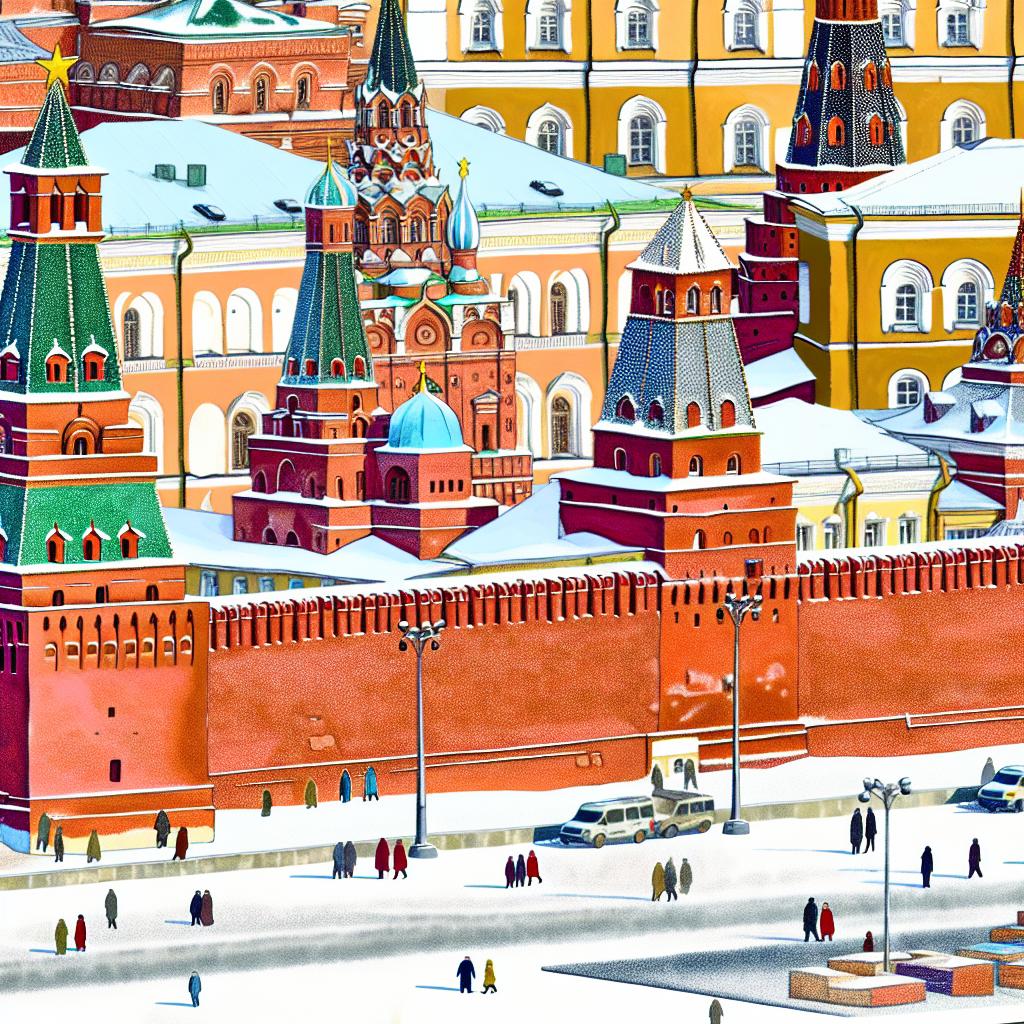The Kremlin: An Overview
The Kremlin is a historic fortified complex located in the heart of Moscow, Russia. It is not only a dominant landmark but also serves as the official residence of the President of the Russian Federation. The complex symbolizes Russian political power and is a central part of the country’s history and politics.
History of the Kremlin
The origins of the Kremlin date back to the 12th century. Over the following centuries, it expanded and evolved significantly. During the 15th century, under the rule of Ivan III, it was transformed from a wooden structure to a stone fortress. Renowned Italian architects were commissioned to build some of its walls and towers, giving it a blend of Russian and Renaissance architectural styles.
Initially, the Kremlin was a humble wooden fortification, reflecting the architectural practices of its period. The strategic position of the Kremlin by the Moskva River made it a critical fortification for the early rulers of Russia. The fortress gradually took shape as a citadel capable of housing not only the ruling parties but also serving as a military bulwark against invading forces. During the 14th century, as Moscow rose in importance as a political and economic center, the wooden structures were expanded.
Ivan III’s decision to transform the Kremlin into a stone fortress marked a turning point. The influence of Italian Renaissance architects is prominently seen in the fortress’s design, blending local traditions with contemporary European styles. Over time, the Kremlin became synonymous with Russian sovereignty. It became both a symbol and a seat of formidable power—a visual narrative of the historical evolution of Russia through eras of peace and conflict.
Architectural Highlights
The Kremlin encompasses several iconic buildings and structures that not only boast of architectural grandeur but also have significant cultural and historical relevance:
The Grand Kremlin Palace: Constructed in the 19th century, the Grand Kremlin Palace is one of the most exquisite examples of imperial Russian architecture. Serving initially as the tsar’s residence in Moscow, the palace showcases the opulent lifestyle of the Russian emperors. Its design and interior are replete with intricate details, marked by rich frescoes and gilded moldings. At present, it plays a pivotal role during state receptions, reflecting its continued importance in ceremonial life.
The Assumption Cathedral: Known as a masterpiece of Russian medieval architecture, the Assumption Cathedral stands in the Cathedral Square as an embodiment of religious power. It was here that the Russian tsars were crowned, profusely decorated with frescoes and icons that exhibit an unparalleled artistic heritage of the Orthodox Church. The construction of the cathedral by Ivan the Great in the late 15th century underscored the central role of Orthodoxy in shaping Russian culture.
The Ivan the Great Bell Tower: Serving as a part of Moscow’s skyline, the Ivan the Great Bell Tower exemplifies the Kremlin’s invincible spirit. Stretching upwards, it stands as the tallest structure within the fortress. Constructed to represent Orthodox faith, its architecture is defined by harmonious proportions that offer panoramic vistas of Moscow, providing a unique viewpoint that illustrates how the city has developed around the heart of the Kremlin.
The Tsar Bell and Tsar Cannon: Among the exceptional historical artifacts in the Kremlin complex are the Tsar Bell and the Tsar Cannon. These extraordinary artifacts not only symbolize Russia’s historical military prowess but also demonstrate the craftsmanship of Russian metallurgy. Though neither the bell nor the cannon were ever used as envisaged, their presence enriches the architectural ensemble, each with its own story to tell about ambition and national pride.
The Kremlin Today
In modern times, the Kremlin remains a key political hub. It houses the President’s office and administrative apparatus. Furthermore, it continues to be the epicenter of Russian political activities, orchestrating governance and international diplomacy. The political relevance of the Kremlin is impervious to the passage of time, continuously shaping the nation’s trajectory.
Also, it is part of the Kremlin Museums, attracting millions of tourists each year who are eager to explore its ornate cathedrals and grand halls. The museums not only preserve the artistic and cultural essence of Russia but also serve as a conduit for educating with exhibits that span centuries of history. They offer an opportunity to view precious artifacts and gain insights into Russia’s autocratic heritage, religious evolution, and geopolitical significance.
Conclusion
The Kremlin is an architectural marvel and a symbol of Russia’s rich history. As a structure that has witnessed the sweep of Russian history—including periods of transformative change—it stands as a testament to the nation’s historical narrative, reflecting both its challenges and triumphs. Whether visited for its political significance or its aesthetic appeal, the Kremlin holds a pivotal place in the cultural and political life of Russia. With its myriad palaces, cathedrals, and bell towers, it retains a majesty that inspires admiration and appreciation from anyone who steps into its storied precincts.

